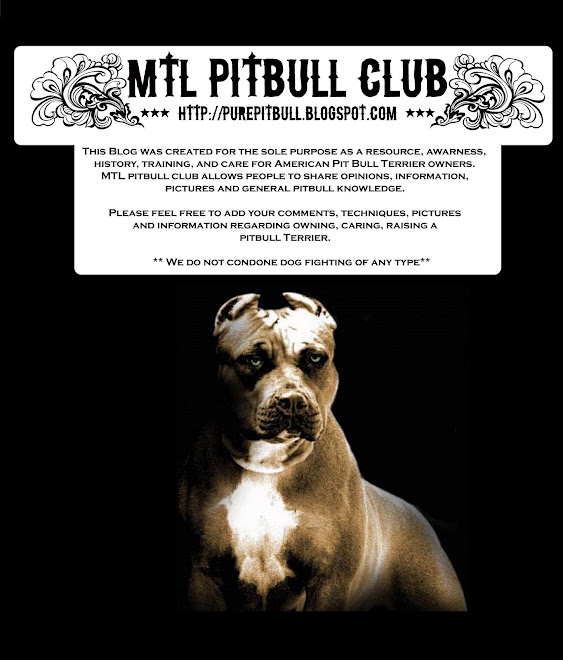The official origin of the breed.
In 1898, Chauncy Bennet formed the United Kennel Club (UKC), a breed registry aimed solely at the registration and acceptance of Pit Bull Terriers. Chauncey’s own dog “Ring” was the first dog registered in the UKC. The UKC at that time when Pit fighting was still widely accepted as a national pastime the UKC provided registration and fighting guidelines for Pit fighting. Bennet sought to create an organization that would represent the breed as performance dogs. Thus, the American Pit Bull Terrier was born as a breed. At that time the UKC was an elite registry for the APBT. For a Pit Bull to be accepted into the UKC as an American Pit Bull Terrier the dog had to have won three fights. Years later when dog fighting became illegal the UKC quickly abandoned its past and has become an all breed registry that focuses on the working aspects of dog breeds. The UKC is now the second largest purebred dog registry in the United States, complete with strict bylaws that ban anyone who is convicted of dog fighting. Another registry that was started solely for APBT’s, the American Dog breeders Association was born twelve years after the UKC. The ADBA was started by Guy McCord? who was a close friend of one of the founding fathers of the modern APBT. The ADBA and the UKC are the only true registries of the American Pit Bull Terrier and have withstood the test of time. Over the next thirty years the American Pit Bull Terrier became one of the most popular breeds in American history. It was only with this popularity that another registry known as the American Kennel Club bowed to an overwhelming number of requests and accepted the APBT as a breed. They did however change the name of the breed hoping to hide their true origins unlike the original registries that honored the history of the breed. The AKC decided to register Pit Bulls as Staffordshire Terrier, which was later changed to the American Staffordshire Terrier in 1972. Up until 1936, Pit Bulls and AST’s were physically identical. After 1936, AST’s were no longer bred for the defined working type but for what is TYPICALLY a more “flashier” look with blockier heads, larger chests and a thicker jaw. Currently the AST, due to a closed gene pool and a great deal of popular stud syndrome, has developed into a very narrow phenotype, while APBT’s still vary phenotypically from lanky to stocky, from terrier to bully. Although the phenotypic expression varied in the APBT, relative weight, size and proportion remained constant and dogs over 60lbs are rarely seen in the yards of ethical breeders. The Pit Bull has been selectively bred over 170 plus years, until they have become marvelous working and companion dog, used for purposes as varied as those it originally performed. Properly bred modern working APBT’s are still bred to be exceptionally sturdy and extremely human friendly, not to mention athletic, courageous, and tenacious. They can be found employed as police/armed services dogs, Therapy dogs, search and rescuers, APBT’s have been used by the FDA and USDA for sniffing out bombs and drugs, the first certified hearing dog in Alaska was an APBT, and even today they continue to work livestock. The are indeed one of the most versatile breeds on the planet.
Subscribe to:
Post Comments (Atom)


As a professional breeder and lover of dogs,I hate to say but a lot of your information is an attempt to sanitize the reputation of a dog bred for its vicousness,tenacity and quick temper, and There are too many stories regarding the APBT attacks on children and small animals that deserve telling.
ReplyDelete